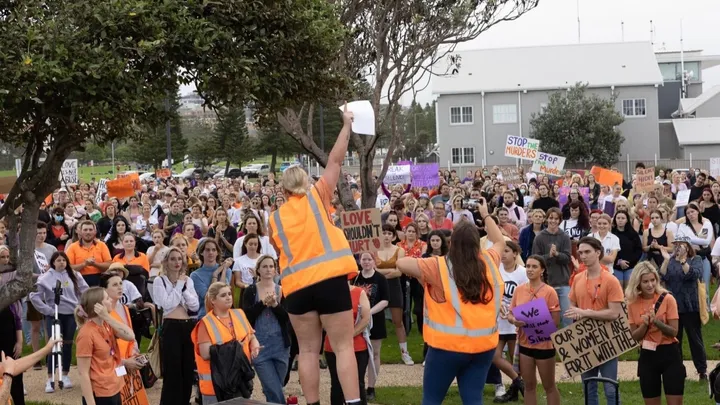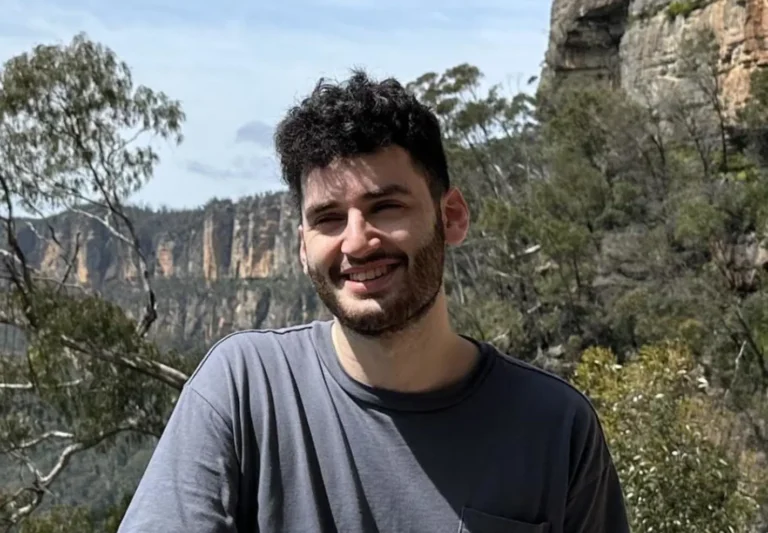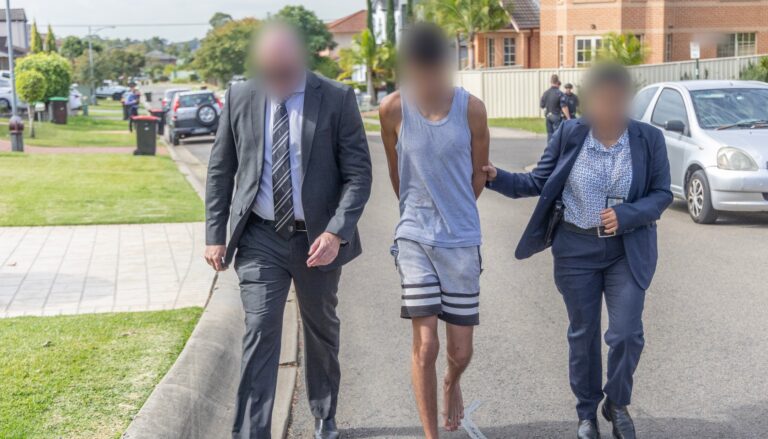
Barbara McGrady: The First Nations photojournalist that shaped the industry
By MIKALA THEOCHAROUS
The McDonald Jones stadium in Broadmeadow NSW, is full of fans.
Greg Inglis stands in the middle of the field above the scrum, preparing to lead the traditional war cry before the Indigenous All Stars game. In the middle of it all is 67-year-old Barb McGrady, camera in hand.
A murmur erupts from the crowd in anticipation, and suddenly she sees it: the perfect shot.
Four years later, at 10:50 am on a Thursday, Badde Manors café in Glebe is bustling. The traffic outside and the clanking of the coffee machine make it hard to hear the softly spoken, 71 year-old Barbra McGrady speaking, her quiet and reserved nature belies her powerhouse career that has seen fearlessness documenting the action.
“I got into photography… I was about 15. My mother bought me a camera. And she bought me a set of encyclopedias, which was unusual for an Aboriginal family,” she tells me.
“So I was always curious about the world, about black people around the globe… I started photographing my community, people around me, the landscape. It just went from there.”
Barb (as she’s called by friends and family) is a proud Gomeroi / Murri / Yinah woman, and an award-winning photojournalist.
She is the first-ever Indigenous female photojournalist. With no formal training, it’s clear that McGrady has a natural eye for photography. Her work honours legendary First-Nations sportspeople, as well as activists from her community.
“I felt as though my people were invisible. We weren’t seen, we weren’t heard. I saw all of these amazing black people in Time and Life magazine, and I thought where are we? Where do we fit into all of this?”
Our conversation turned to the controversial interpretations of Australia’s past with First-Nations people, and the stereotypes that came with those. McGrady spoke confidently, but quietly. Taking time between each word to catch her breath.
“(In society’s eyes) there were no positive Aboriginal sports people, it was all negative and stereotyped… My biggest accomplishment is that I did what I set out to do. To put our story out there in the public domain. To counter all the negative stereotypes about who we are as people, our history, our culture.”
Recognition for her work
Over the years, McGrady has curated a long list of prestigious awards including the National Indigenous Human Rights Anthony Mundine Courage Award – for social documentary photography, as well as her International Solid Screen Award for Indigenous Women in Photo Media documentation. While drawing international recognition for her work, she still manages to stay humble.

“I’ve never seen it as a job, I see art everywhere… (so) that was a huge honour for me to receive that award for indigenous women, cause I’ve seen the amazing women who won it before me… was I really on their level?”
With her work being featured in publications like The Telegraph and The Guardian, as well as being honoured in the 2020 Biennale of Sydney, it’s obvious that McGrady’s work has showcased Indigenous people in a way that has never been done before. She calls it “seeing the world through my black lens.”
Photojournalist and friend John Janson-Moore, who worked on the Biennale with McGrady, had nothing but good things to say about her: “Barbara McGrady is considered a “Great Black National Treasure’ in my books, so it was a real privilege to collaborate with her on last year’s Biennale of Sydney project ‘Maran Yaliwaunga Ngaara-li (Our Ancestors Are Always Watching)’…. It is an intensely personal work. Barbara is so deeply connected to her community and to her culture in a uniquely contemporary way.
Her knowledge and insight are profound. To get a glimpse of that through working with her was such an honour.”
Activism through photography
McGrady’s work within her community is truly making a difference.
She’s made such an impact on the Aboriginal community that the NCIE held an exhibition of her work titled ‘because of her we can’, an exhibition that McGrady says left her in tears as it was a “once in a lifetime compliment
Although McGrady is a ground-breaking photojournalist, activist, and inspiration to her community, as well as the industry, she still faces racism every day. Close friend and photojournalist Lisa Hogben asked me if Barb had told me the ‘Event story”, she had not.
“Oh for f*cks sake. Excuse the French, I’ve never been more infuriated in my whole life.”
There is a specific government campaign that is dedicated to helping indigenous people. They have helped shape government policy around Aboriginal and Torres Strait Islander people, and they also host an annual yearly. Hogben had gone along with McGrady to the event as her assistant.
“We ended up finding the event organiser and we walked up to him. He immediately started addressing me, a white woman, instead of Barbara, and acting like she was my assistant,” Hogben explained.
“This was the head of the organisation, and he was ignoring her. I’ve never felt worse, there was my sister standing next to me and he’s disrespecting her at her gig.”
Afterwards, I expressed my anger to Barb. All she said was ‘what did you expect?’”

A friendship beyond words
Hogben was very passionate when talking to me about McGrady. It’s evident that the friendship she has with McGrady is extremely special to Hogben, in a way that’s hard to express with words.
“Role model doesn’t even encompass how much of an impact she’s had on me, and on black people… she’s taught me about life, and how to look at life more than anyone else.”
I very quickly realised how special Barbara is to the people around her, which is what made talking about her Chronic Obstructive Pulmonary Disease (COPD) so hard for all of them, including Mcgrady.
The Disease causes obstructed airflow to the lungs and comes with some nasty side-effects like bronchitis and Emphysema.
“My illness engulfs me. It’s all consuming… It’s like I’ve got these two big balloons inside my lungs. The pressure and the pain is unbearable sometimes.”
Although the disease limits her physical movement, she has no intention of stopping anytime soon.
“The job isn’t too physically demanding, it’s the kind of job you can do if you’re in reasonable health until you’re a hundred.”
With the help of her cousin and a wheelchair, she photographed Mardi Gras this year despite her illness restricting her. She also gets around Glebe taking photos on her mobility scooter, which is just another example of her unmatched work ethic.
“I don’t fit in anywhere, I can’t. I’m just me.”









